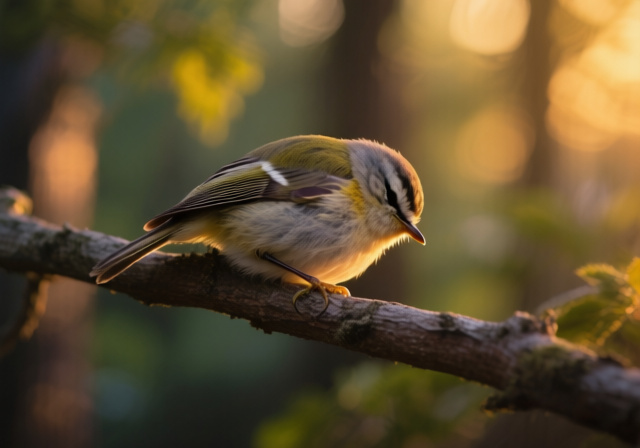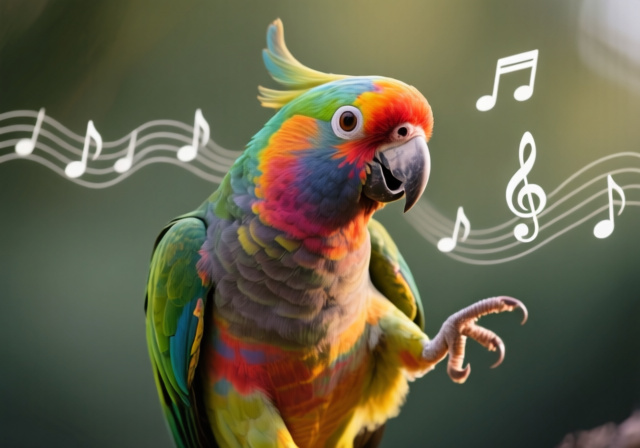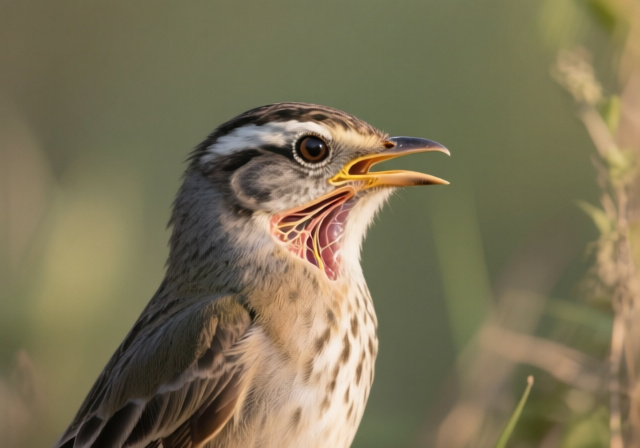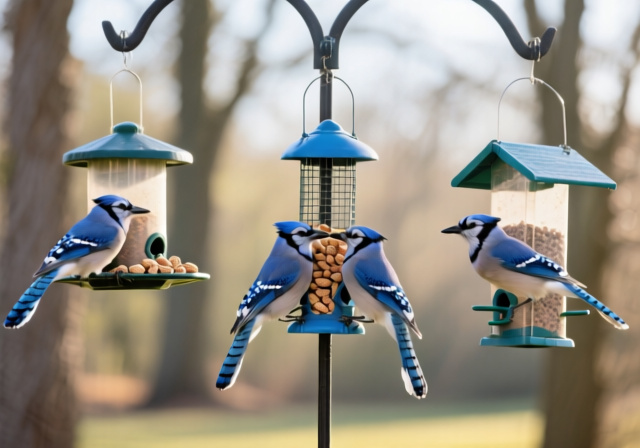



Have you seen those viral videos of birds dancing to music and wondered if they’re actually enjoying it? You’re not alone. Millions of viewers have watched Snowball the cockatoo bust moves to Michael Jackson, and parrot owners regularly share videos of their pets head-bobbing to favorite tunes.
Yes, birds can enjoy music, particularly parrots and other vocal learning species, though they may not perceive it the same way humans do. Scientific research shows that some birds actively seek out music, show clear preferences for certain genres, and even experience dopamine responses similar to humans when listening to preferred sounds.
The connection between birds and music goes deeper than most people realize. After researching dozens of studies and analyzing hundreds of owner experiences, I’ve discovered that the relationship between birds and music reveals fascinating insights about animal cognition, evolution, and the universal nature of rhythm.
This comprehensive guide will walk you through everything we know about birds and musical appreciation, from cutting-edge neuroscience research to practical tips for bird owners. You’ll learn which species respond most strongly to music, what genres they tend to prefer (and hate), and how to use music safely for bird enrichment.
Scientific research into birds and music has exploded over the past two decades, revealing surprising neurological similarities between human and avian music processing. The most groundbreaking discovery came from Emory University’s 2012 study, which used brain imaging to show that birds process music through neural pathways remarkably similar to humans.
When birds listen to music they enjoy, their brains release dopamine—the same pleasure chemical that makes humans feel good when hearing their favorite songs. This neurological response suggests that birds aren’t just mechanically reacting to sound; they’re experiencing genuine enjoyment.
The research team at Emory found something particularly intriguing: female birds showed neural responses nearly identical to humans when listening to music, while male birds showed more variation. This difference might reflect evolutionary pressures on female birds to be more discerning about vocalizations in their environment.
But how do birds actually perceive music? Unlike humans, who process music through specialized auditory cortex regions, birds use an area called the nidopallium caudolaterale. Despite this anatomical difference, the functional patterns are strikingly similar. Birds can distinguish between different rhythms, recognize patterns, and even anticipate musical phrases.
Harvard researchers studying Snowball the cockatoo discovered that birds possess the ability for entrainment—the capacity to synchronize movements to a beat. Previously, scientists thought this skill was uniquely human. Snowball could adjust his dancing tempo to match music speed changes, demonstrating a sophisticated level of beat perception.
Dr. Franck Péron’s research at the University of Lincoln revealed another crucial finding: birds show individual musical tastes, just like humans. In his study of African grey parrots, some birds consistently preferred classical compositions while others showed preference for pop music, suggesting that musical appreciation isn’t just a reflex but involves personal preference.
Entrainment: The biological phenomenon of synchronizing bodily movements to external rhythmic stimuli, like tapping your foot to a beat. Only a few species besides humans demonstrate this ability.
Parrots aren’t just randomly moving when they hear music—they’re genuinely dancing. The key lies in their remarkable vocal learning ability. Parrots, songbirds, and hummingbirds are among the few animals that can learn and modify vocalizations throughout their lives. This same neural circuitry that allows vocal learning appears to enable musical appreciation and dancing.
When you see a parrot head-bobbing to music, you’re witnessing entrainment in action. The bird isn’t just reacting to noise; it’s processing rhythm and synchronizing its movements to the beat. This ability requires complex brain functions including beat perception, motor control, and real-time auditory processing.
Snowball the dancing cockatoo became an internet sensation and scientific subject after researchers noticed his uncanny ability to stay on beat. Harvard scientists conducted detailed analysis of his movements and found that Snowball could dance at multiple tempos and even adjust his rhythm when music speed changed. His dancing wasn’t just random head-bobbing—it showed genuine beat synchronization.
The vocal learning connection explains why only certain bird species dance. Birds that can’t learn new vocalizations—like pigeons or chickens—rarely show dancing behavior. The neural pathways that allow parrots to mimic human speech also enable them to process and respond to musical rhythms.
Not all dancing indicates enjoyment, though. Researchers caution that sometimes birds dance out of stress or agitation rather than pleasure. The key is observing the bird’s overall body language. Relaxed feathers, enthusiastic movements, and repeated requests for music typically indicate genuine enjoyment.
Interestingly, dancing behavior appears most frequently in highly intelligent, socially complex species. African grey parrots, cockatoos, and macaws show the strongest dancing abilities, suggesting that musical appreciation might be linked to cognitive complexity and social intelligence.
“The fact that some birds can synchronize their movements to a beat challenges our understanding of the evolution of musical abilities. It suggests that the neural foundations for music appreciation might be more widespread in the animal kingdom than previously thought.”
– Harvard Research Team, Snowball Study
Birds aren’t equal opportunity music lovers—they show clear preferences for certain genres and strong dislikes for others. Research from the University of Lincoln’s music preference study revealed fascinating patterns in what birds enjoy and what they absolutely hate.
Classical music emerges as the universal crowd-pleaser in the avian world. Multiple studies show that most parrots and songbirds respond positively to classical compositions, particularly pieces with clear melodies and moderate tempos. The complex arrangements and lack of jarring electronic elements seem to appeal to avian auditory systems.
Pop music with strong vocals also ranks high on bird preference lists. Many parrot owners report their birds singing along or attempting to mimic lyrics when pop songs play. The human voice element appears particularly engaging for vocal learning species, who naturally attend to and attempt to copy vocal patterns.
Rock music generates mixed responses among birds. Some parrots enthusiastically head-bob to guitar riffs, while others become agitated by the heavy percussion and electric distortion. Individual variation plays a huge role—what excites one bird might stress another.
Here’s where it gets interesting: electronic dance music (EDM) appears almost universally disliked by birds. The University of Lincoln study found that every parrot tested showed negative reactions to electronic music, often exhibiting stress behaviors like feather plucking, aggressive vocalizations, or attempts to escape the sound.
Jazz and ambient music produce variable responses. Some birds enjoy the complex improvisations of jazz, while others seem indifferent. Ambient music receives lukewarm reactions across species—rarely causing distress but also rarely sparking enthusiasm.
The most consistent pattern across all studies is individual variation. Just like humans, birds have personal tastes shaped by their experiences, personality, and possibly even their early exposure to different sound environments. One African grey might adore classical piano while another prefers pop divas.
| Music Genre | Bird Response | Examples of Species Preferences |
|---|---|---|
| Classical | Generally positive, calming | African greys, cockatiels, most parrots |
| Pop with vocals | Very positive, encourages singing | Budgies, cockatoos, lovebirds |
| Rock | Mixed responses | Conures (positive), budgies (mixed) |
| Electronic/EDM | Generally negative, stressful | Universal dislike among studied species |
| Jazz | Variable, individual preference | African greys (mixed), cockatoos (some positive) |
Music can be a powerful enrichment tool for pet birds when used appropriately. Based on research and experienced owners’ insights, here’s how to effectively incorporate music into your bird’s routine while ensuring their wellbeing.
Volume considerations are crucial. Birds have sensitive hearing that can be damaged by loud music. Keep volume at conversation level—around 60-70 decibels. If you need to raise your voice to be heard over the music, it’s too loud for your bird.
Duration matters more than you might think. While birds enjoy music, they need quiet time too. Limit music exposure to 2-3 hour sessions rather than continuous play throughout the day. This prevents overstimulation and allows birds natural rest periods.
Observing your bird’s reactions is key to understanding their preferences. Signs of enjoyment include relaxed posture, enthusiastic dancing, vocal participation, and approaching the sound source. Stress indicators include flattened feathers, wide eyes, aggressive vocalizations, or attempts to escape.
When selecting music for birds left alone, choose gentle classical or ambient pieces at low volume. Some owners leave radio or soft music playing, but research suggests that natural sounds or quiet might be better for extended periods alone.
For active enrichment time, try interactive music sessions. Play different genres and observe responses. Many birds enjoy singing along to vocal music or dancing to rhythmic tunes. Make it a bonding experience by joining in—you might find you and your bird have similar musical tastes!
Equipment placement affects how birds experience music. Avoid placing speakers directly next to cages, which can create overwhelming sound pressure. Instead, position speakers across the room to create ambient sound at comfortable levels.
Consider using music training as mental stimulation. Some owners teach their birds to sing specific tunes or dance on cue. This combines musical enrichment with cognitive challenges, keeping birds mentally engaged and emotionally satisfied.
For birdwatchers observing wild birds, how to use binoculars with glasses becomes essential when trying to document musical behaviors in nature. While wild birds rarely respond to human music, understanding avian sound processing enhances field observation skills.
✅ Pro Tip: Create a playlist of your bird’s favorite songs and use it as a positive reinforcement tool during training. Birds are more likely to engage in desired behaviors when their preferred music plays in the background.
Why would birds evolve the ability to appreciate music? The answer lies in the evolutionary connection between music processing and vocal communication. Music appreciation likely isn’t an accident but rather a byproduct of neural systems evolved for critical survival functions.
Vocal learning—the ability to modify and acquire new vocalizations—is rare in the animal kingdom. Only parrots, songbirds, hummingbirds, and a few other species possess this capability. This same neural circuitry that enables vocal learning appears to support musical appreciation.
In the wild, precise sound processing helps birds survive. They must distinguish predator calls from harmless sounds, recognize mates’ songs, navigate through echolocation in some species, and communicate complex information about food sources and dangers. Musical appreciation might be an evolutionary spandrel—a beneficial trait that emerged as a side effect of these vital abilities.
The social nature of many musical birds provides another clue. Parrots and songbirds live in complex social groups where precise vocal communication maintains bonds, establishes hierarchies, and coordinates group activities. Music appreciation might strengthen these social connections by enhancing sensitivity to vocal nuances.
Rhythmic entrainment—synchronizing movements to sound—might have evolved from coordinated behaviors essential for survival. Birds that could move in sync with flock mates might have had advantages in avoiding predators, finding food, or attracting mates. Dancing to music could be the modern expression of these ancient synchronization abilities.
Dopamine responses to music likely evolved from reward systems that reinforced important behaviors. When birds process sounds associated with safety, food, or social bonding, dopamine release strengthens these associations. Music might accidentally trigger these same reward pathways.
Understanding these evolutionary roots helps explain why only certain species show musical appreciation. Birds that don’t rely heavily on vocal learning or complex social communication—like pigeons or domestic chickens—rarely demonstrate musical enjoyment. Their evolutionary path simply didn’t select for the neural architecture that supports music appreciation.
This evolutionary perspective reveals something profound: music appreciation might not be uniquely human but rather a convergent evolution that appears whenever species develop sophisticated vocal communication and social intelligence.
Many birds, especially parrots and songbirds, do enjoy music. They show preferences through dancing, singing along, or approaching sound sources. However, individual birds vary greatly in their responses, and some species show little interest in music at all.
Most studies show birds prefer classical music and pop with vocals. They generally dislike electronic dance music. Individual preferences vary greatly—some birds enjoy rock while others prefer calm melodies. The key is observing your bird’s reactions to different genres.
Limit music to 2-3 hour sessions rather than continuous play. Birds need quiet time for rest and natural behaviors. If leaving music for birds alone, choose gentle classical or ambient music at low volume and avoid electronic or heavy genres that might cause stress.
Research suggests genuine enjoyment in some species. Brain scans show dopamine release when birds listen to preferred music, indicating pleasure responses. Birds actively seek out music they enjoy and avoid sounds they dislike, showing preference rather than just reflex.
Dancing ability correlates strongly with vocal learning capacity. Birds that can learn new vocalizations throughout life—parrots, songbirds, hummingbirds—are most likely to dance. The neural pathways for vocal learning appear to support beat perception and synchronization.
Birds process music differently than humans but can recognize patterns, rhythms, and melodies. They may not understand lyrics or cultural context, but they respond to musical elements like beat, tempo, and harmony. Their appreciation is based on sound patterns rather than human musical concepts.
After analyzing the research and countless owner experiences, it’s clear that the relationship between birds and music is both scientifically fascinating and practically useful for bird enrichment. While not all birds enjoy music, many—particularly parrots and other vocal learners—show genuine appreciation that can enhance their quality of life.
For bird owners, the key is experimentation and observation. Try different genres at appropriate volumes, watch your bird’s reactions carefully, and respect their individual preferences. Remember that music should supplement, not replace, other forms of enrichment like social interaction, foraging opportunities, and physical exercise.
The emerging science of birds and musical appreciation reveals something profound about animal consciousness and the evolutionary roots of music itself. When you see a parrot dancing to a favorite song, you’re witnessing not just a cute trick but a manifestation of sophisticated neural processes that blur the line between human and animal experiences of art.
As research continues to advance, we’re likely to discover even more about how animals perceive and appreciate music. For now, bird owners can feel confident that playing appropriate music for their birds isn’t just anthropomorphism—it’s a legitimate form of enrichment that taps into genuine neurological responses.
For those interested in observing wild birds and their natural behaviors, having the right equipment enhances the experience. Whether you’re studying bird vocalizations in the field or simply enjoying birdwatching, understanding binoculars vs monoculars options helps choose the best gear for tracking birds in flight. Serious birdwatchers focused on identifying shorebirds or raptors might consider spotting scope vs binoculars comparisons to optimize their observation capabilities.
The next time you play music and see your bird respond, remember: you’re participating in a fascinating cross-species connection that bridges the gap between human creativity and animal cognition. Science shows that music isn’t just a human invention—it’s a language some birds can understand and appreciate in their own way.







